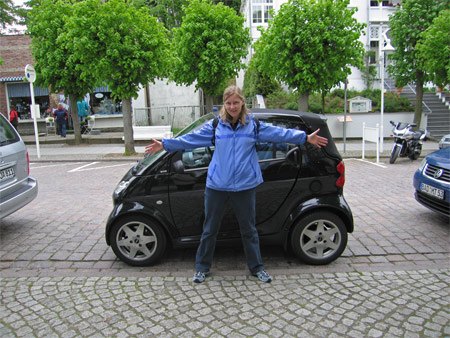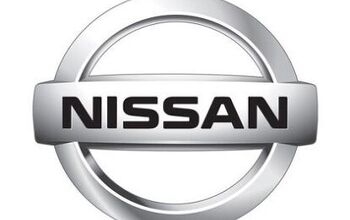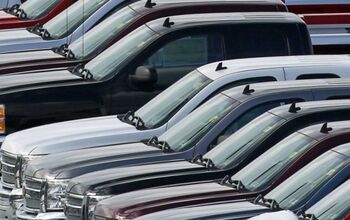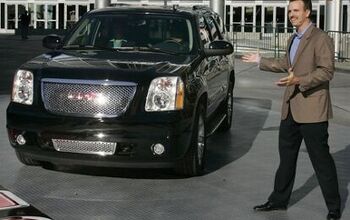European June Auto Sales Up Slightly, But Up They Are

For the first time in fourteen months, European car buyers registered more cars than in the same month the previous year, the European Auto Manufacturer Association ACEA reports. For the month of June, Europe (as defined by the ACEA) records a modest growth of 2.4 percent, mostly “carried by the effects of fleet renewal schemes in more than 10 EU Member States.”
“Fleet renewal schemes” is a EUphemism for cash for clunkers.
What is interesting is that June ’08 was still strong. Any growth recorded against a strong month of the previous year is a good sign. As this graph shows, the car-nage in Europe begun in September ’08, and it was downhill from there. Expect more “growth” news from Europe for the following months, as a cautiously recovering market compares with a disastrous fall and winter of 2008. (Ignore August. All of Europe is on vacation in August, and next to nobody buys any cars while on vacation.) Country by country, it’s still a mixed bag.
Lithuania (-63.9 percent) beats Iceland (-63.7) by a hair for the coveted title “basket case of Europe.” Germany (+40.5 percent) runs on Abwrackprämien-steroids. Astoundingly, tiny Slovakia must have overdosed on growth hormones (+57.4 percent).
On the marketshare front, same-old, same-old. The Volkswagen Group is still in an unassailable lead with a share of 21.3 percent of the European market on a first half of the year basis, followed by PSA (12.8 percent), and Ford (10.3 percent). The GM Group (as it is or was) is in a dead head with Fiat with a 9.1 percent share.
In the segments game, “premium” has turned into a dirty word. Anything fancy is being punished by falling sales. Case in point: Dacia, Romanian dictator Ceauşescu’s autoworks (now owned by Renault) which sells the bargain basement Logan, came in with a 58.2 percent share in June, while BMW (-10.2 percent) and Daimler (-2.7 percent) are still hemorrhaging. Neither the Mini (-1 percent) nor the Smart (-11 percent) could mollify the mediocre market for their masters’ automobiles.
Overall, Europe had never fallen as deep as the USA and is slowly climbing out of the shallower hole. Next year (as the market goes through withdrawal symptoms from the “fleet renewal schemes”) should be interesting.
For the deep data number crunchers: Europe in June as PDF, and for the spreadsheet jockeys, Europe in June in Excel.

Bertel Schmitt comes back to journalism after taking a 35 year break in advertising and marketing. He ran and owned advertising agencies in Duesseldorf, Germany, and New York City. Volkswagen A.G. was Bertel's most important corporate account. Schmitt's advertising and marketing career touched many corners of the industry with a special focus on automotive products and services. Since 2004, he lives in Japan and China with his wife <a href="http://www.tomokoandbertel.com"> Tomoko </a>. Bertel Schmitt is a founding board member of the <a href="http://www.offshoresuperseries.com"> Offshore Super Series </a>, an American offshore powerboat racing organization. He is co-owner of the racing team Typhoon.
More by Bertel Schmitt
Latest Car Reviews
Read moreLatest Product Reviews
Read moreRecent Comments
- UnoGeeks Great information. Unogeeks is the top SAP ABAP Training Institute, which provides the best SAP ABAP Training
- ToolGuy This thing here is interesting.For example, I can select "Historical" and "EV stock" and "Cars" and "USA" and see how many BEVs and PHEVs were on U.S. roads from 2010 to 2023."EV stock share" is also interesting. Or perhaps you prefer "EV sales share".If you are in the U.S., whatever you do, do not select "World" in the 'Region' dropdown. It might blow your small insular mind. 😉
- ToolGuy This podcast was pretty interesting. I listened to it this morning, and now I am commenting. Listened to the podcast, now commenting on the podcast. See how this works? LOL.
- VoGhost If you want this to succeed, enlarge the battery and make the vehicle in Spartanburg so you buyers get the $7,500 discount.
- Jeff Look at the the 65 and 66 Pontiacs some of the most beautiful and well made Pontiacs. 66 Olds Toronado and 67 Cadillac Eldorado were beautiful as well. Mercury had some really nice looking cars during the 60s as well. The 69 thru 72 Grand Prix were nice along with the first generation of Monte Carlo 70 thru 72. Midsize GM cars were nice as well.The 69s were still good but the cheapening started in 68. Even the 70s GMs were good but fit and finish took a dive especially the interiors with more plastics and more shared interiors.


































Comments
Join the conversation
"You don’t want to hear what standing in front of a Hummer makes a person look like." How about, they look like a person of financial means exercising free choice in an capitalistic market, how's that? Of course, you picked an extreme example and not a standard size car. I made my comment because the micro car in the photo is an extreme vehicle of the kind which the nanny-staters are eager to push.
The problem is, whatever the actual fuel consumption of these fleets will be, any positive trend in automotive sales will send a signal to investors to start hedging their bets in oil futures... again. Some anti-egalitarian eco-communists groan about the third-world getting more affordable cars. Supposedly because that means more pollution. But the sad, cynical fact is... they know the truth: no matter how small and fuel-efficient they are, the fact that more people have cars means less oil for the rest of us. I presume they want us to save the last of the oil so their grandchildren can go on eating ridiculously expensive rare New-World organic foodcrops shipped in on a bunker-oil-burning cargo ship from South America when they're dead and gone. - Whether it's a bubble or signs of actual recovery, we're probably in for another (albeit slow) rollercoaster ride up the slippery slope of "peak oil". Or is that "peak price oil"? Can't really decide. I just hope that the peak comes at 80-90 dollars instead of hitting over $100 again. - Land Rover whut? Jaguar who? Are Ford's year-to-year figures an aggregate of all Ford Group nameplates or merely for the core brand? That would be an interesting comparison... if a large portion of that 10% loss is because they don't have Jaguar and Land Rover in their stats anymore, they should be pretty happy about their current market position.